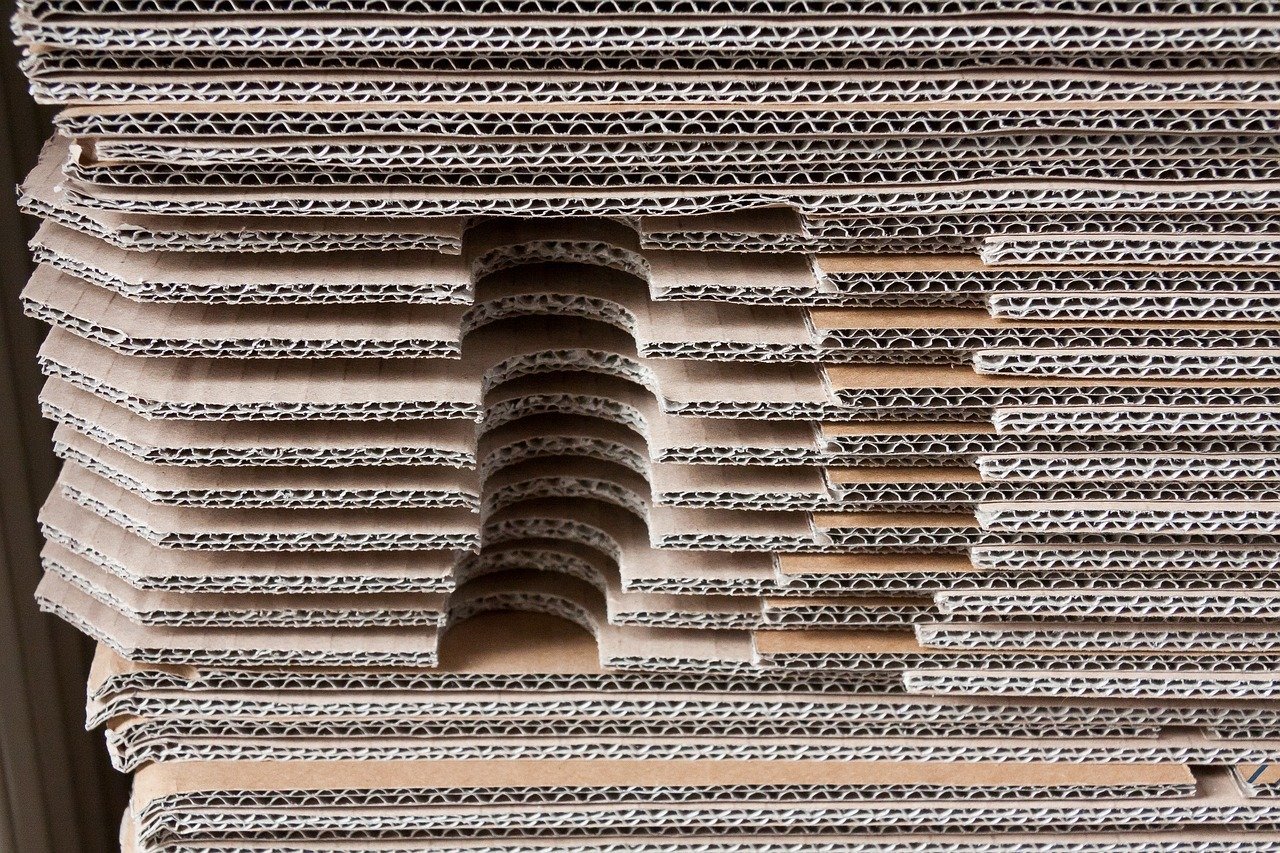Corrugated fiberboard is one of the most sought-after packaging solutions in any store. If you run a business and carry related products, here’s what you need to know. Available in several variations, such as rolls and sheets, it is also the primary material used for the production of American shipping boxes, and related formats of boxes designed for the transport of heavy and/or fragile goods.
What is Corrugated Fiberboard?
Corrugated fiberboard is a material made from fibrous layers of cardboard with a structure formed by an inner or central rib made from corrugated paper (also called fluting), externally covered with two layers of paper, which protect both sides of the material. These two sheets are adhered to the waves of the corrugated paper of the central rib by means of adhesive or cellulose applied to the crests of the waves of the fiber or cardboard paper.
The union of these sheets gives corrugated fiberboard the property of flexibility. We must bear in mind that the board loses its resistance and correct flexibility if the central rib or central corrugated paper suffers crushing or deterioration. There are several variants of corrugated boxes, having 3 to 5 layers of paper, having one or two ribs made with corrugated paper, which is called Single Channel or Double Channel.
Types of Corrugated Fiberboard
As we add more or fewer sheets of corrugated paper and plates, we will obtain up to four types of corrugated cardboard:
- Single-channel corrugated fiberboard with a single cover: consists of a medium and a single liner. It is ideal for wrapping fragile products before placing them in boxes during the order picking process.
- Single-channel corrugated fiberboard with two covers: it consists of a corrugated cardboard sheet and two outer sheets. It is most common in the manufacture of boxes with flaps.
- Double channel corrugated fiberboard: it is characterized by having two flutes separated by a third liner (apart from including the two external ones). We turn to this when boxes with extra resistance are required.
- Triple channel corrugated fiberboard: the result of joining three sheets of corrugated paper and four cardboard sheets. This is recommended when the merchandise being shipped is especially heavy.
Uses of Corrugated Fiberboard
The corrugated fiberboard in rolls serves to wrap objects of different shapes, providing them with optimal protection against shocks, scratches and all kinds of aggressions that may be suffered during their transport. It is also very useful for covering furniture, floors, walls and other surfaces when carrying out interior renovation works. Corrugated fiberboard will prevent damage from construction, tiling, painting, etc.
With corrugated fiberboard sheets, you can compartmentalize spaces inside the packages. This prevents shocks from handling, as well as accidental perforations of the content. And, of course, corrugated fiberboard is the perfect raw material to make any type of box.
We must bear in mind that corrugated fiberboard loses its resistance and correct flexibility if the central rib or central corrugated paper suffers crushing or deterioration. There are several variants of corrugated fiberboard, having 3 to 5 layers of paper, which may provide one or two ribs made with corrugated paper, to better fortify the material so as to resist crushing or other damage.
Take these data into account when choosing your corrugated fiberboard model.










